
World of Warcraft: The Burning Crusade is the first expansion pack for the MMORPG World of Warcraft. It was released on January 16, 2007 at midnight (0:00 AM) in Europe and North America, and sold nearly 2.4 million copies that day, making it the fastest-selling PC game in those regions. It was released on January 17, 2007 in Australia and New Zealand;in total, approximately 3.53 million copies were sold across these territories in the first month of release, including 1.9 million in North America, over 100,000 copies in Australasia, and nearly 1.6 million in Europe. It was also released in Singapore, Thailand, and Malaysia on January 16, 2007. It was later released in South Korea on February 1, 2007; in Taiwan, Hong Kong, and Macau on April 30, 2007.The game was released in China on September 6, 2007.
Gameplay
Main article: Gameplay of World of Warcraft
Two new playable races were added to World of Warcraft in The Burning Crusade: The Draenei of the Alliance and the Blood Elves of the Horde. Previously, the Paladin class was exclusive to the Alliance faction, and the Shaman class was exclusive to the Horde faction; these new races allowed Alliance players to play Shaman as Draenei, and allowed Horde players to play Paladins as Blood Elves.
Player vs. Player
A new battleground, Eye of the Storm, was introduced with two brackets: one for characters between levels 61-69, and another for level 70 characters. Although this battleground was designed for level 70 characters, players are unable to summon flying mounts in this battleground. The Eye of the Storm battleground is only available to those with the expansion.
In addition, a new PvP Arena System was introduced as a way for players to fight in 2 vs 2, 3 vs 3, or 5 vs 5 "Arena" battles. While the arena system allows players without The Burning Crusade expansion to partake in skirmish matches, those without the expansion are unable to participate in rated matches, which yield rewards based on a point system. Ladder matches were only accessible by players who have reached level 70. Three arena stages were introduced in The Burning Crusade expansion, including The Ruins of Lordaeron in the Undercity, The Circle of Blood in Blades Edge Mountains, and the Ring of Trials in Nagrand.Arena matches have taken a more prominent role in World of Warcraft's PvP content, and have developed into an electronic sport. One example of Arena matches as an electronic sport is the World Series of Video Games in 2007, where player teams competed in 3 vs 3 matches to earn cash prizes.Blizzard also holds its own seasonal tournament, the World of Warcraft Arena Tournament, which pitches teams from servers all around the world against each other.This tournament concludes with a 5v5 world final event, the first of which took place at Blizzcon ’07 and so ended season 1.
Additional "outdoor" PvP objectives were implemented, which are different for each zone in which they are located. Most of these outdoor PvP objectives involve "capturing" key points to reward players of the same faction in the area, usually with a temporary buff that adds a damage boost to player attacks or increases the rate players gain experience or faction points while the players are in the zone. For example, Terokkar Forest's PvP contest involves players standing near towers in order to capture them while defending the towers in PvP combat with players of the opposite faction that try to capture the objective. Other examples include Halaa in Nagrand and the Hellfire Fortifications in Hellfire Peninsula, where players compete for control to unlock quest and vendor access or gain factional reputation for rewards. Development
Distribution errors
Blizzard made a number of errors during the distribution of World of Warcraft: The Burning Crusade in Europe. One such error is the failure to register the Collector's Edition for in-game rewards. As such, players who purchased the Collector's Edition of the game would have to send numerous proofs of purchase to Blizzard by postal mail in order to redeem their in-game awardsOnly 1,600 copies were delivered to Romania, which has more than 10,000 World of Warcraft subscribers.
Main article: Gameplay of World of Warcraft
Two new playable races were added to World of Warcraft in The Burning Crusade: The Draenei of the Alliance and the Blood Elves of the Horde. Previously, the Paladin class was exclusive to the Alliance faction, and the Shaman class was exclusive to the Horde faction; these new races allowed Alliance players to play Shaman as Draenei, and allowed Horde players to play Paladins as Blood Elves.
Player vs. Player
A new battleground, Eye of the Storm, was introduced with two brackets: one for characters between levels 61-69, and another for level 70 characters. Although this battleground was designed for level 70 characters, players are unable to summon flying mounts in this battleground. The Eye of the Storm battleground is only available to those with the expansion.
In addition, a new PvP Arena System was introduced as a way for players to fight in 2 vs 2, 3 vs 3, or 5 vs 5 "Arena" battles. While the arena system allows players without The Burning Crusade expansion to partake in skirmish matches, those without the expansion are unable to participate in rated matches, which yield rewards based on a point system. Ladder matches were only accessible by players who have reached level 70. Three arena stages were introduced in The Burning Crusade expansion, including The Ruins of Lordaeron in the Undercity, The Circle of Blood in Blades Edge Mountains, and the Ring of Trials in Nagrand.Arena matches have taken a more prominent role in World of Warcraft's PvP content, and have developed into an electronic sport. One example of Arena matches as an electronic sport is the World Series of Video Games in 2007, where player teams competed in 3 vs 3 matches to earn cash prizes.Blizzard also holds its own seasonal tournament, the World of Warcraft Arena Tournament, which pitches teams from servers all around the world against each other.This tournament concludes with a 5v5 world final event, the first of which took place at Blizzcon ’07 and so ended season 1.
Additional "outdoor" PvP objectives were implemented, which are different for each zone in which they are located. Most of these outdoor PvP objectives involve "capturing" key points to reward players of the same faction in the area, usually with a temporary buff that adds a damage boost to player attacks or increases the rate players gain experience or faction points while the players are in the zone. For example, Terokkar Forest's PvP contest involves players standing near towers in order to capture them while defending the towers in PvP combat with players of the opposite faction that try to capture the objective. Other examples include Halaa in Nagrand and the Hellfire Fortifications in Hellfire Peninsula, where players compete for control to unlock quest and vendor access or gain factional reputation for rewards. Development
Distribution errors
Blizzard made a number of errors during the distribution of World of Warcraft: The Burning Crusade in Europe. One such error is the failure to register the Collector's Edition for in-game rewards. As such, players who purchased the Collector's Edition of the game would have to send numerous proofs of purchase to Blizzard by postal mail in order to redeem their in-game awardsOnly 1,600 copies were delivered to Romania, which has more than 10,000 World of Warcraft subscribers.
Reception
The Burning Crusade received almost universal praise from critics upon release. The specially designed new starter areas met a mixed reception from critics. On the one hand, they were felt to give a strong new perspective to existing players or a solid introduction to the game to new players. The arrangement of quests and content in these areas was felt to be more finely tuned than for existing races,with players. It was felt that Blizzard had learned from the release of the original game, with the new content being varied without becoming overwhelming to new players, and new concepts being gradually introduced. On the other hand, reviewers felt that the new starter areas were poorly integrated with the existing world, leaving them feeling "tacked on." They were also disappointed that the new areas had a definite finish, beyond which a player would have to switch back to older content in order to progress their character.This progression didn't feel as smooth to reviewers when compared to the movement between zones for new characters from the older starting areas. The experience was also felt to be short-lived, with players being able to progress through these new areas with a couple of days' play without any new introductory dungeons to explore. It was also felt that these changes didn't address existing problems, such as the travel time between quest locations.Like in the original, the scenery of The Burning Crusade was highly praised, being described as "occasionally breathtaking," The introductory video to the expansion was described as "hugely impressive."It was generally felt that the new Outland areas were some of the best in the game,with the size of the new areas introduced being similar to the total size of other existing games in the genre. The new starting areas were also liked, with reviewers appreciating the attention to detail in these zones.Building architecture, scenery and creatures were all singled out for mention, despite some disappointment that buildings and creatures from the original game had been "rubber stamped" into these new locations.The uniqueness of each zone, from scorched plateaus to lush forests were praised, each area being described as having its own unique feel. The various small features, such as mechanical settlements or abandoned temples were also well liked. Players were advised that they would spend a large amount of time "just staring at the scenery" in these new locations. That said, it was felt that the game was starting to show its age, with careful use of texture and lighting techniques disguising a basic underlying geometry. This was thought to follow on from the strategy in the original game, where strong art direction and careful choice of colour helped to compensate for a simpler game engine, describing it as a "testament of art over technology."The orchestral music was well received, being described as providing a "constantly changing backdrop." The new score was felt to mesh well with the original, while still providing occasional "fresh twists." The soundtracks to each of the two new starting areas were particularly praised. Reviewers were generally positive about the voice acting in the game. World of Warcraft: The Burning Crusade was the best-selling PC game of 2007 in North America and Europe, and it is also the second fastest-selling PC game of all time(behind Wrath of The Lich King), selling nearly 2.4 million copies in its first 24 hours and approximately 3.5 million in its first month.
A second expansion, World of Warcraft: Wrath of the Lich King, was released on November 13, 2008
A second expansion, World of Warcraft: Wrath of the Lich King, was released on November 13, 2008
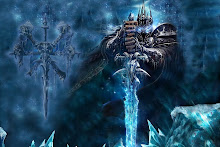
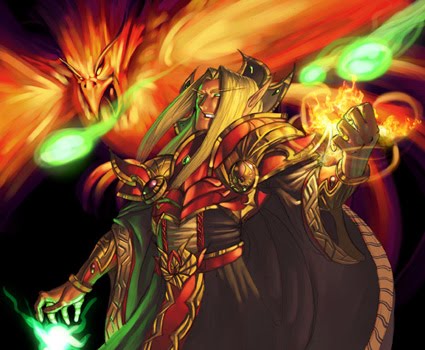
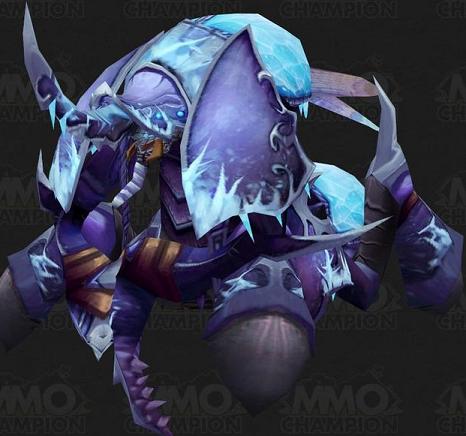
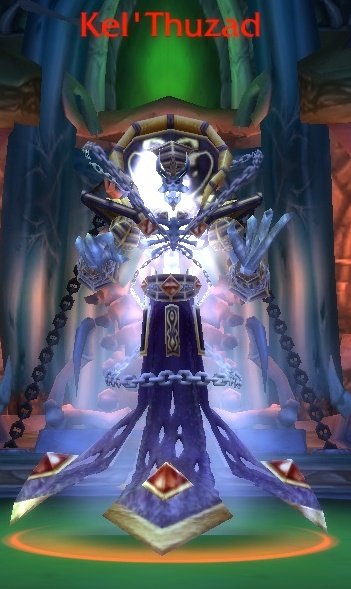
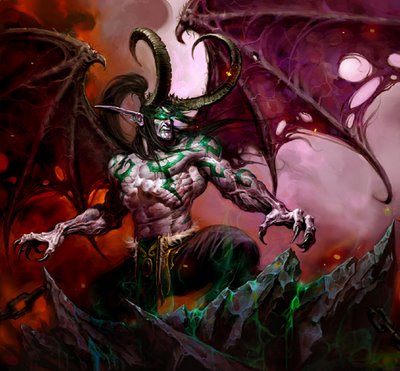
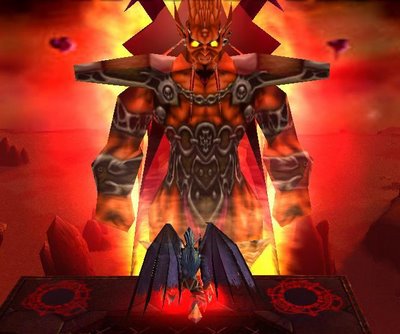
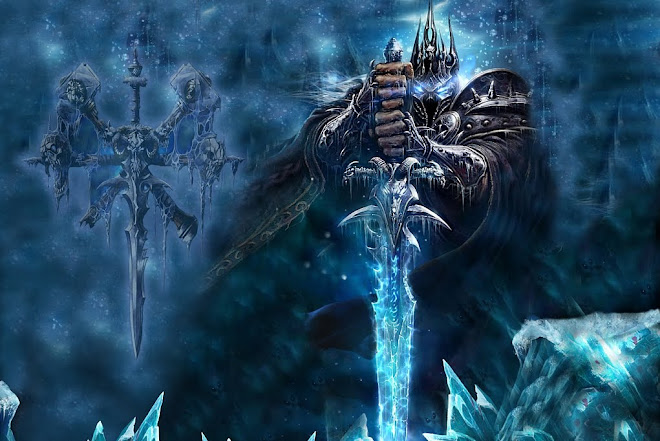
Tidak ada komentar:
Posting Komentar